Island of the Dead (Island Week)
Thursday, 31st August 2006 by Alex Turnbull
At first glance Hart Island in the Long Island Sound, New York, seems a rather inconspicuous little island. Dig a little deeper... and things get a little more disturbing.
In 1869 Hart Island was established as the City's public cemetery - NYC's Potter's Field, where impoverished, unidentified, unclaimed or unwanted bodies are buried. Over the next 120 years the island was home to virtually every conceivable kind of a socially undesirable person - in a wide variety of facilities including:
- A prison for Confederate soldiers
- An isolation zone during a yellow fever epidemic
- A women's tuberculosis hospital
- An insane asylum
- An old men's home
- A young men's reformatory
- A WWII Navy disciplinary barracks
- A narcotic rehabilitation centre
The island was also home to a Nike Ajax missile base, and the missile silos are still visible even from up here.
Today Hart Island is no longer any kind of jail (the last prisoners were transferred to NYC's infamous Rikers Island in 1991), but the City Cemetery is still maintained by the Department of Corrections - during the week a consignment of inmates is brought here by bus to bury the forgotten dead.
Each year up to 3,000 bodies are buried in Hart Island's Potter's Field, which is marked out in squares by white gravestones - with up to 150 adult bodies or 1,000 infants packed into each square.
The DOC estimates that up to 750,000 burials have taken place here since 1869 (although around 100 disinterments take place each year too), but given how tiny the island is, this must surely be America's most densely packed cemetery. In 1948 the prisoners erected a monument to all the unclaimed dead who are buried on Hart Island, which still stands to this day.
Hart Island isn't open to the general public, but in 2000 a group of historians were allowed to visit and the resulting ground level photo-tour is well worth seeing.
Links: Hart Island Wikipedia page, the Hart Island official site, and a detailed history of the island.
Thanks to Nat.
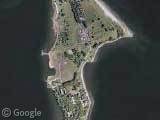
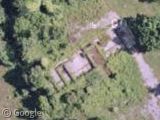
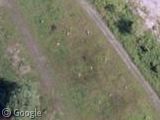
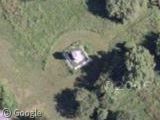
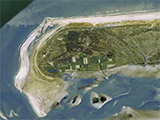

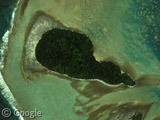
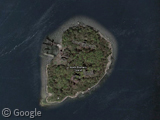
Wow, amazing story on Hart Island. I never knew where it was located but I remember hearing about it I think on a “Law and Order” episode once. Thanks for the post and the link to the photo tour. Great stuff.
This island was also a plot point/filming location for the movie “Don’t Say a Word“
Thank you for the post – as always!
My, aren’t you lot polite today! No problem guys – it was fun researching this one, it really is a spooky place. The main problem was keeping the post to a reasonable length!
(Hence why I left out the movie Ron, thanks for getting it back in!)
very good post–and great research!
This place must have a virtual parade of ghosts running around.
Look! there’s one by the dock! 🙂
https://www.googlesightseeing.com/maps?p=&c=&t=k&hl=en&ll=40.853975,-73.772678&z=19
Inmates consider the Hart Island burial detail the most desirable of all jail work assignments. Only inmates nearing the end of their sentences and with no disciplinary records have any hope of being selected.
Don’t forget the 2003 incident where four teenagers drowned while trying to boat from Hart Island back to City Island:
http://www.belluckfox.com/news006.html
“This island was also a plot point/filming location for the movie ‘Don’t Say a Word'”
Actually – it was a plot point but from the commentary on the DVD the filming largely took place on a sound stage here in Toronto.
Don’t Say a Word looks nothng like Hart Island. I just finished a documentary about Hart Island.
I discovered from this satellite image that the “Pavillion” which opened a women’s lunatic asylum in 1887 has recently been torn down. It was there when I did a video interview in 2004.
An uncle of mine is buried here. Such a cold place
Just saw the movie “Don’t Say a Word” last night on Australian TV. What an interesting place – just had to see if it really existed.
David’s Island, which is right near Hart Island, is more accessible and just as interesting. We explored the island one day while boating. This island also has the remains of many buildings, warehouses and a church. It’s one of the islands Donald Trump was interested in building upon until he factored in the cost of cleanup and bridge construction.
I am searching for my great-grandparents and would like to know if they may be burried on Hart Island. Anyone with the name “Wolframsdorf”
Carol Richardson: A name in my family history is also Wolframsdorf: immigrated from Seitingen in late 1840’s to New York City: Josef and Catherine, Ernest Mathilde, Theresa (daughters).
CAK III
Long Island Sound should not be preceeded by the word “the” unless you are referring to the actual noise made by the island. It is Long Island Sound.
I have photos of the island that I took in 2006 that are posted on Google Earth/Panaramio…it’s really an awesome place.